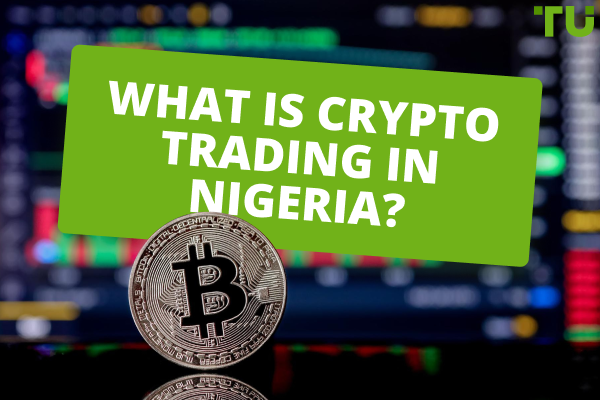Best Сryptocurrency Exchanges for Low-Cost Trading in Canada

Cheapest Crypto Exchange in Canada - Coinbase
Top cheapest crypto exchanges:
Coinbase – spot fee 0,40%-0,60%;
Kraken – spot fee 0,016%-0,26%, futures fee 0,02%-0,075%;
BitGet – spot fee 0,1%, futures fee 0,02%-0,06%;
Paxful – 1% P2P-transaction fee for sellers (there are no spot fee and future fee);
Phemex – spot fee 0,1%, futures fee 0,01%-0,06%.
Crypto exchanges are vital channels for cryptocurrency transactions within the financial industry. Choosing the right exchange is crucial, as it ensures reliable services and is pivotal in managing costs for traders. However, navigating through the plethora of options among crypto exchanges can be overwhelming for traders, especially beginners.
In this guide, we unveil the top five cheapest crypto exchanges available to traders in Canada, focusing on platforms that offer seamless trading experiences with budget-friendly fee structures. By elucidating their fee structures, we aim to provide traders with the best cryptocurrency exchanges for low-cost trading in Canada.
-
Which crypto exchange has the lowest fees in Canada?
Crypto exchanges like Coinbase, Kraken, Bitget, Paxful, and Phemex have the lowest fees in Canada.
-
Is Coinbase legal in Canada?
Yes, Coinbase operates legally in Canada.
-
Is Kraken cheaper than Coinbase?
Yes, Kraken is relatively cheaper than Coinbase.
-
How to buy crypto easily in Canada?
To buy crypto easily in Canada, sign up on a reputable crypto exchange such as Coinbase, Kraken, etc. Fund your account to start buying crypto.
What Are the Cryptocurrency Exchange Typical Fees?
Trading Fee
Trading fees on cryptocurrency exchanges are fees that you must pay in order to trade on a platform. This is often how the exchanges make their money and keep their platforms running.
So, how much does it usually cost to trade on a cryptocurrency exchange? Most cryptocurrency exchanges charge between 0% and 1.5% per trade. However, these percentages depend on whether you’re a maker (buyer) or taker (seller). Fees also vary by exchange.
To understand how much you’ll have to pay in trading fees, it helps to look at an example. So, if you end up paying 0% and 1.5% trade and you invest $1,000 of your money into crypto, you’ll end up paying anywhere from $0 to $15 in fees.
Taker and Market Fee Difference
Another key aspect of trading on cryptocurrency exchanges is maker-taker fees. These fees are transaction costs that occur when orders are placed and filled.
Trading fees depend on the type of order placed. For example, if you’re a maker, you’re “creating or making” the market for other traders, bringing liquidity to the exchange.
On the other hand, if you’re a taker, you’re removing liquidity by “taking” available orders that are filled immediately.
Usually, taker fees are slightly higher than maker fees. Cryptocurrency exchanges that implement lower maker fees do so to incentivize market makers.
Deposit and Withdrawal Fee
Beyond trading fees, investors of cryptocurrency might also have to pay deposit or withdrawal fees, depending on the platform they choose. Often, deposit fees vary based on the type of deposit. However, only some crypto exchanges charge deposit fees.
The exchanges that forego withdrawal fees choose to do so because it might disincentivize traders from funding their accounts. Therefore, deposit fees tend to be less common than withdrawal fees.
For cryptocurrency withdrawals, many exchanges charge a flat fee regardless of the amount withdrawn. However, some might take an additional fee based on your country or the type of withdrawal (i.e. whether it’s crypto or fiat).
Other Fees
There are other fees on certain crypto exchanges that you may run into. For example, you might have to pay borrowing fees on crypto exchanges that offer margin trading.
With margin trading, you can borrow additional funds to increase your position and create leverage. So, if you’re trading on margin, you may have to pay additional fees based on the amount you borrow.
You might also be subject to paying an interest rate, which is typically based on the supply of funds available. You might also be responsible for liquidation fees if your trade goes upside down and the position is liquidated.
Cryptocurrency Exchanges With Lowest Crypto Trading Fees in Canada
Below are the cheapest cryptocurrency exchanges (spot)
| Exchange | Max. Maker Fee | Min. Maker Fee | Max. Taker Fees | Min. Taker Fee |
|---|---|---|---|---|
0.40% |
0% |
0.60% |
0.05% |
|
0.016% |
0.0% |
0.26% |
0.01% |
|
0.1% |
0.08% |
0.1% |
0.08% |
|
- |
- |
- |
- |
|
0.1% |
0.0% |
0.1% |
0.045% |
Below are the cheapest cryptocurrency exchanges (futures)
| Exchange | Max. Maker Fee | Min. Maker Fee | Max. Taker Fees | Min. Taker Fee |
|---|---|---|---|---|
- |
- |
- |
- |
|
0.02% |
0.0% |
0.05% |
0.01% |
|
0.02% |
0.06% |
0.02% |
0.06% |
|
- |
- |
- |
- |
|
0.01% |
0.0% |
0.06% |
0.0325% |
Cryptocurrency Exchanges Non-Trading Fees Comparison
Cryptocurrency Exchanges With Low Fees: How Do They Compare?
Coinbase
Coinbase is one of the pioneers and most popular exchanges in the cryptocurrency space since launching in 2012. It started by primarily offering a platform to buy and sell major coins like Bitcoin and Ethereum.
Over the years, Coinbase has expanded its offerings to include staking, lending, earning interest on stored coins, Coinbase Wallet for decentralized apps, and Coinbase Pro for more advanced traders. It has over 100 million verified users and is publicly traded on the NASDAQ.
Coinbase prioritizes security and is focused on being fully compliant with regulators in the countries it operates in. Funds are stored offline in cold storage for increased protection. The platform is best suited for beginners and more conservative crypto traders.
The exchange is known for its simple and user-friendly interface. However, this ease of use comes at a higher fee compared to other major exchanges.
Specifically, for taker orders the fee ranges from 0.05%-0.6% depending on your 30-day trading volume. For maker orders, you pay a 0-0.4% fee. Trading fees decrease slightly as your 30-day volume increases - the more you trade, the lower the percentage fee.
For Stable Pairs, the maker and taker will pay a fee of 0.00% and 0.001%, respectively.
Coinbase recently introduced futures trading through a new Coinbase Financial Markets platform accessible under Advanced Trade. During the beta launch period, futures trading fees on Coinbase are set at a discounted rate of 0.05% to encourage users to test out the new offering. This introductory fee applies to both maker and taker orders executed on Coinbase Financial Markets futures contracts.
Once the beta period ends, futures fees will adopt the standard Coinbase tiered fee structure based on 30-day trading volumes. Like other crypto exchanges, fees are expected to range from 0.1% to 0.5% depending on the order type and individual account trading performance.
The current 0.05% fee during beta provides those evaluating Coinbase's foray into derivatives with reduced costs to experience futures trading before regular pricing goes into effect after the introductory period ends. It aims to attract volume and feedback during the launch phase.
While Coinbase fees are higher than most major exchanges, the platform offers easy sign-up and funding processes along with a simple interface ideal for beginners. It only allows spot trading of major cryptocurrencies.
Kraken
Kraken trading fees are relatively low compared to competitors, with fees ranging from 0% to 0.26% per trade. And the platform’s maker-taker fees are amongst the lowest in the industry.
Kraken also offers a Pro account option, which consists of a tiered fee structure that allows high-volume traders to save on trading fees. So, for example, if you’re a trader with 30-day volumes of less than $50,000, you’ll pay as low as 0.16% in maker fees and 0.26% in taker fees.
But if you’re a trader with 30-day rolling volumes of over $10 million, maker fees can drop as low as 0%, and taker fees can drop as low as 0.10%. Beyond its low cryptocurrency trading fees, Kraken is also a great choice for traders because it supports a large number of cryptocurrencies and is a highly liquid exchange.
BitGet
BitGet is a renowned crypto exchange platform with a user-friendly interface, a diverse range of crypto assets, and a competitive fee structure for traders. The platform offers a fee structure for crypto maker and taker, which vary based on trading volume. It is worth noting that Bitget offers traders a discount fee of 0.08% for transacting using the BGB token native to the platform.
Therefore, the general maker and taker fee (with BGB discount) for spot trading is from 0.08% to 0.1%, regardless of the trading volume. Meanwhile, the fee for future trading for the maker is 0.02%, while the taker fee is 0.006%. However, crypto transactions without the BitGet native token (BGB) attract a flat fee rate of 0.1%.
Furthermore, BitGet offers a tiered-based maker and taker fee for VIPs, which differs significantly based on trading volume. The maker fee for spot trading (for VIP) typically ranges from 0.04% to 0.0125%, while the taker fee ranges from 0.06% to 0.035%. On the other hand, the maker fee for futures trading is from 0.016% to 0.008%, while the taker fee is from 0.04% to 0.032%.
Paxful
Paxful is a beginner-friendly crypto platform that allows users to buy and sell Bitcoin and other cryptocurrencies using various methods. The platform stands out for its peer-to-peer (P2P) model, making it convenient for individuals with varying preferences and challenges to transact in crypto without hassle.
Paxful connects crypto buyers and sellers directly via peer-to-peer trading, allowing users from different countries to participate in P2P transactions. It employs standard security measures to protect customers’ funds.
Paxful’s transaction fees can vary depending on the payment method and trade amount. Typically, Paxful has higher transaction fees for sellers than buyers; it charges a 1% transaction fee for sellers, while the fee for buyers is free in most cases.
Phemex
Phemex is an innovative crypto exchange platform that offers advanced trading tools, high liquidity, and leverage trading to enhance the overall trading experience of its users. Besides, the platform is one of the exchanges with the lowest fee in the crypto space.
Phemex offers a competitive transaction fee model tiered in varying structures for makers and takers on its platform. The fee is structured based on the type of trades, trading volume, and VIP membership level, providing incentives for liquidity makers and takers.
The maker fee for spot trading ranges from 0.1% to 0.0%, while the taker fee ranges from 0.1% to 0.045%. Conversely, Phemex’s maker fee for futures trading ranges from 0.01% to 0.0%, while the taker fee ranges from 0.06% to 0.0325%.
Furthermore, it is worth mentioning that Phemex does not charge a fee for Bitcoin withdrawals. However, a Bitcoin network fee (minimum of 0.00005
How to Choose a Low-Commission Cryptocurrency Exchange
There are many types of cryptocurrency exchanges available to choose from. But if you’re trying to minimize your trading fees as much as possible, how can you find exchanges that offer low commissions?
We’ve put together a step-by-step guide to help you find cryptocurrency exchanges with the lowest fees on the market.
Step 1
Research different cryptocurrency exchanges that are available in your country. Make a list of possible exchanges.
Step 2
Go on each exchange’s website to look at their fees. Under each exchange, write down their fee structures. This might include commissions, trading fees, maker-taker fees, or margin trading fees. Other fees you might consider are potential liquidation fees. Also, if withdrawal and deposit fees are something you’re concerned about, check whether potential exchanges charge these fees.
Step 3
Using the information you’ve gathered about potential exchanges, create a comparison table. List out the different exchanges.
Create columns/rows for different fee categories, including commissions, trading fees, maker vs. taker fees, any margin trading fees, liquidation fees, or deposit and withdrawal fees.
Looking at the comparison table, determine which platforms offer the most favorable trading conditions and the lowest fees.
It’s a good idea to eliminate the ones that offer trading fees higher than 1.5%. Anything lower than 1.5% is considered low when it comes to trading fees. So, by sticking to this rule, you can narrow down your choices to just a few exchanges.
Step 4
Consider if the different platforms offer tiered accounts, which provide you with opportunities to decrease your trading fees.
Some crypto exchanges offer professional accounts that allow you to get discounts for your trading fees. However, other platforms don’t offer these opportunities. So, be sure to do your research and compare.
Step 5
Some crypto exchanges have their own native coin like Binance (BNB), OKEx (OKB), Huobi Global (HT), and many more.
Usually, these platforms allow you to reduce your trading fees by staking a certain amount of their native coins.
The more coins you stake, the more you can save in trading fees. If this sounds like something you’re interested in, be sure to keep this factor in mind when considering low commission crypto exchanges.
Step 6
As you consider the many factors in regards to trading fees for different cryptocurrency exchanges, you might come across a few with a similar fee structure.
To help you narrow your list down further, you can consider other features beyond trading fees. There are other things that can make your trading experience a positive one.
For example, a platform’s ease of use, security, the number of supported cryptocurrencies, whether the platform offers margin trading, whether the exchange is under regulation by financial authorities, the available trading platforms, and the method of purchasing coins.
You might also consider the minimum amount you can deposit to open your account. Some platforms have high deposit minimums, while others allow you to deposit a small amount of money to get started.
You can also see if the exchanges you’re considering have sign-up offers and other deals that give you access to free cryptocurrency.
For example, some exchanges may offer a certain number of free Bitcoin or even give you money upon creating a new account. This will, in turn, reduce the fees in your portfolio balance.
With these features, you can create another comparison table. Only this time, you’ll be listing out the exchanges you’ve narrowed down. And the columns and rows will have the different features offered by each platform that doesn’t have to do with trading fees. This can help you narrow down your choice further.
Step 7
Looking at the comparison table, consider which features mean the most to you. For example, if you’re interested in margin trading, and only one platform in your list offers it, then choose that platform.
Follow the same principle for features that you’re most likely to use. From there, you should be able to settle on one or two exchanges.
How Do I Exchange Cryptocurrencies Without Fees or With Low Fees?
There are several ways to trade crypto with low fees including:
-
Using peer-to-peer trading platforms where you can trade and purchase crypto directly from others without the need for a centralized authority.
-
Use decentralized exchanges which operate on blockchain technology and allow users to trade crypto directly without a centralized authority.
-
Look out for promotions and referral programs. Most exchanges will offer promotions and referrals to gain and keep clients. These can help you lower fees when trading crypto.
Expert Opinion
This ranking of cryptocurrency exchanges for cost-effective trading was compiled not only with regard to commission policies. The research also considered important indicators such as the variety of trading instruments, entry thresholds, security guarantees, and the presence of profit withdrawal limits. The rating aims to assist traders in identifying a suitable option that corresponds to their financial goals and trading style. Executing transactions on platforms with low commissions indeed helps significantly reduce expenses and maximize profits, but it's essential not to rush the choice. It's better to carefully assess all aspects and make an informed decision.
Our Methodology
Traders Union applies a rigorous methodology to evaluate brokers using over 100 both quantitative and qualitative criteria. Multiple parameters are given individual scores that feed into an overall rating.
Key aspects of the assessment include:
-
User reviews. Client reviews and feedback are analyzed to determine customer satisfaction levels. Reviews are fact-checked and verified.
-
Trading instruments. Brokers are evaluated on the breadth and depth of assets/markets available to trade.
-
Fees and commissions. A comprehensive analysis is done of all trading costs to analyze overall cost to clients.
-
Trading platforms. Brokers are assessed based on the variety, quality and features of platforms offered to clients.
-
Extra services. Unique value propositions and useful features that provide traders with more choices for yield generation.
-
Other factors like brand popularity, customer support, education resources are also evaluated.
Team that worked on the article
Joshua Francis is a professional Forex trader with 4+ years of experience in the financial industry. He trades the XAU/USD and GBP/JPY pairs. He is also a ghostwriter and author for Indicatorspot and Traders Union, where he puts his intensive research skills and deep knowledge of the financial markets into freelance writing.
Dr. BJ Johnson is a PhD in English Language and an editor with over 15 years of experience. He earned his degree in English Language in the U.S and the UK. In 2020, Dr. Johnson joined the Traders Union team. Since then, he has created over 100 exclusive articles and edited over 300 articles of other authors.
The topics he covers include trading signals, cryptocurrencies, Forex brokers, stock brokers, expert advisors, binary options. He has also worked on the ratings of brokers and many other materials.
Dr. BJ Johnson’s motto: It always seems impossible until it’s done. You can do it.
Tobi Opeyemi Amure is an editor and expert writer with over 7 years of experience. In 2023, Tobi joined the Traders Union team as an editor and fact checker, making sure to deliver trustworthy and reliable content. The topics he covers include trading signals, cryptocurrencies, Forex brokers, stock brokers, expert advisors, binary options.
Tobi Opeyemi Amure motto: The journey of a thousand miles begins with a single step.















